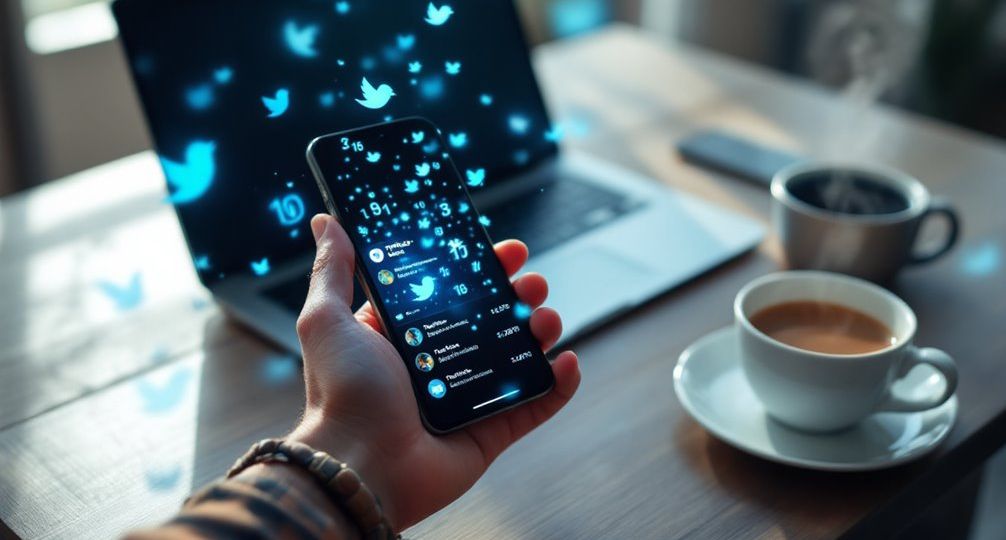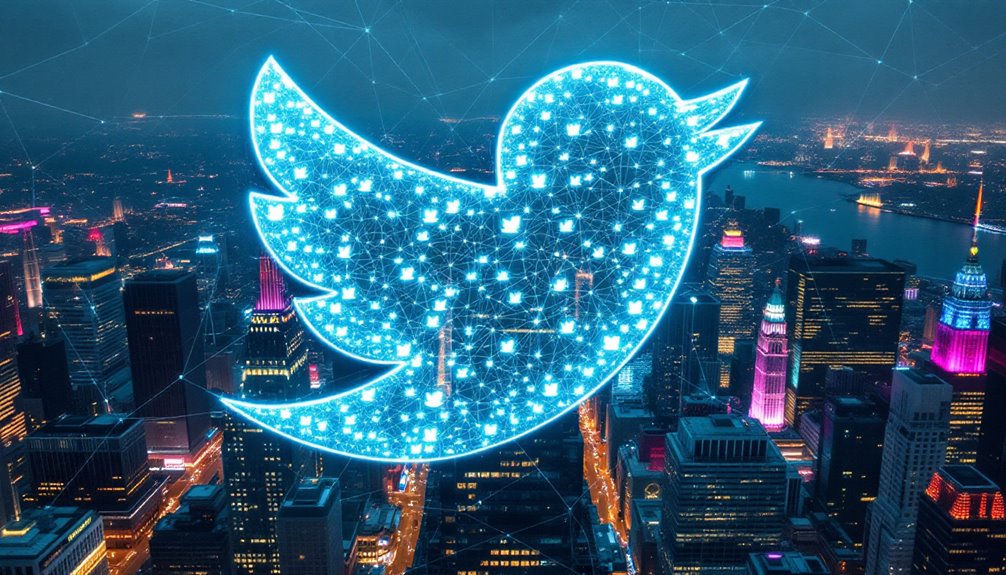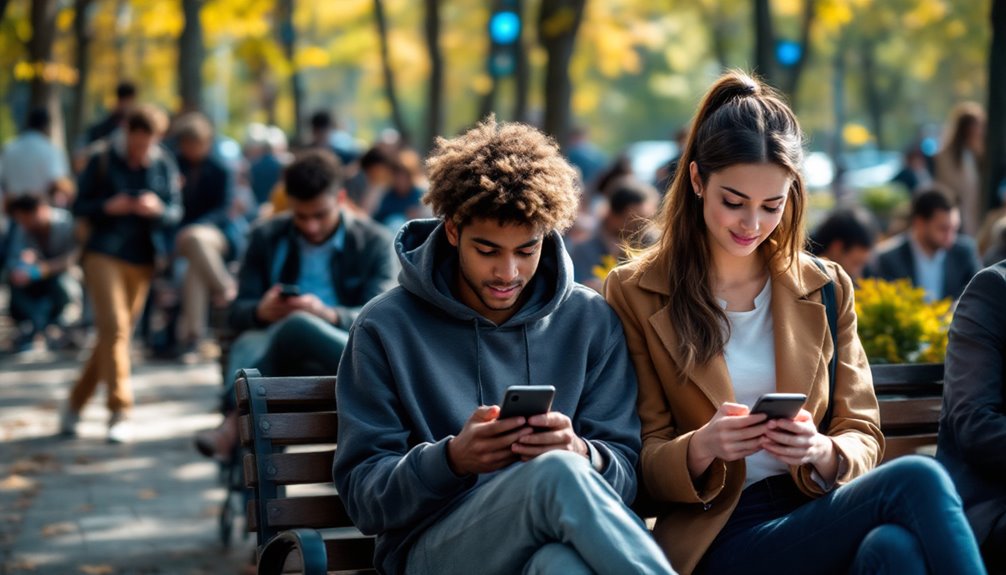
How much does the average person tweet?
When you think about your own Twitter habits, do you often find yourself tweeting or just scrolling through what others share? The average person, surprisingly, tweets only about twice a month. Yet, a small fraction of users dominates the platform’s chatter, contributing to nearly all the tweets you see. So, why do most accounts remain so quiet, and what does this say about user engagement? Whether you’re a casual observer or an aspiring influencer, understanding these dynamics might just change how you approach social media. There’s more beneath the surface of those rare tweets.
Key Takeaways
- The typical user tweets twice a month, indicating low overall activity.
- Median user posts only two tweets monthly, showcasing minimal engagement.
- Over 32.5% of accounts remain inactive for more than a year.
- Daily active users are estimated at 259.4 million, with 450 million monthly active users.
- Top 10% of users generate 92% of all tweets in the US.
Average Tweet Frequency

When you look at the average tweet frequency, it’s clear that most users aren’t as active as you might think. With the typical user tweeting just twice a month, the platform’s overall activity doesn’t come from the average person’s tweeting behavior. In fact, this low frequency points to a significant inequality in tweet distribution. A mere 10% of users account for 92% of all tweets in the US, illustrating a stark contrast in engagement levels. Increased posting frequency may lead to higher engagement, as seen in previous growth when increasing from 2-3 to 10 tweets daily. This minority of active users not only dominates the platform but also drives the massive volume of tweets—around 500 million per day. This disparity affects content diversity on Twitter. While the average user contributes minimally, the content you see and interact with is mainly shaped by a small group of prolific tweeters.
These power users don’t just tweet more frequently; they often set trends and influence the conversation, impacting what gains visibility and engagement. As over 32.5% of accounts remain inactive, the average tweet frequency is skewed, giving a misleading impression of overall user activity.
Understanding this dynamic is essential for grasping the nuances of how content is generated and distributed across the platform.
Daily Tweeting Habits
Many people assume that Twitter’s daily activity is evenly spread among its users, but the reality is quite different. The median Twitter user posts just two tweets a month, highlighting minimal engagement for the average individual. However, the top 10% of tweeters, primarily women, drive most of the platform’s activity. These prolific users often have distinct tweeting motivations, ranging from sharing personal insights to discussing trending news.
Content types vary widely, with some users focusing on niche interests while others engage with broader topics, reflecting diverse user priorities. Age and educational background also influence tweeting habits. Users aged 25-34 make up a significant portion of Twitter’s global audience, yet their tweeting frequency varies. College-educated users might exhibit different patterns, possibly driven by distinct motivations and content preferences. In fact, 10% of users generate 92% of all posts, underscoring the disparity in engagement across the platform.
The average user spends 32 minutes a day on Twitter, with peak activity often aligning with major events or trending topics, suggesting that current events heavily impact daily tweeting habits. Finally, the sheer volume of 350,000 posts per minute and 100 billion daily impressions indicates a vast and dynamic platform.
Yet, not all tweets receive equal attention, as engagement often depends on the relevance and timeliness of the content.
User Engagement Patterns

User engagement patterns on Twitter reveal intriguing insights into how individuals interact with content and brands. You notice that the median engagement rate across industries is a modest 0.029%, but top brands elevate this to 0.102%. Sports teams captivate audiences with a 0.072% rate, while higher education and non-profits see engagement at 0.053% and 0.044%, respectively. Videos outperform other content types, boasting a 0.17% engagement rate and showcasing the platform’s visual appeal. Among the 335.7 million monthly active users, around 237.8 million are considered monetizable daily active users, highlighting significant engagement potential for advertisers. In terms of user behavior, informative content is king, with news and entertainment driving 48% of platform usage. Users frequently research brands (34.9%) and seek humor (34.8%). Remarkably, 75% of users engage with brands, often driven by customer care intentions. When interacting, 64% of users favor messaging over calls, expecting rapid responses within three hours. This immediacy often translates into transactions, with one-third making purchases following positive engagements. Average daily usage stands at 34.1 minutes, with users twice as likely to make in-app purchases. Significantly, video consumption is crucial, with 80% of sessions involving video views, growing 35% annually. The Immersive Video player attracts over 100 million daily users, mainly Gen Z.
Influencer vs. Normal User
Influencers and normal users exhibit distinctly different tweeting patterns on Twitter, revealing insights into their social media behaviors.
Influencer strategies emphasize frequency and originality, with influencers tweeting more often and focusing on a narrow set of topics. This approach allows them to generate engaging, original content, essential for maintaining high audience interaction. High-profile influencers like @IbaiLlanos lead conversations by posting numerous tweets and retweets, demonstrating quick reaction times and high engagement levels. Their content originality often results in a stronger connection with followers and a larger digital footprint.
In contrast, normal user behavior on Twitter is characterized by infrequent activity, with the average person tweeting about twice a month. Most users have fewer than ten followers and generate minimal original content. Instead, they primarily consume content, with 55% of users engaging with news updates. It is notable that 10% of users are responsible for creating 92% of all Tweets, underscoring the significant disparity in content generation between typical users and influencers.
These users spend around 4.4 hours monthly on the platform, indicating a preference for passive content consumption over active participation. While a small percentage of users create the majority of content, the typical user follows others to receive tweets, illustrating a fundamental difference in engagement strategies compared to influencers.
This disparity highlights the diverse ecosystem within Twitter’s user base.
Overall Twitter Activity

When you consider Twitter’s user activity, you’ll find that most people tweet infrequently, with 10% of users generating the majority of content. Despite this, engagement on the platform is nuanced; even users with a large following don’t always see high interaction rates. On average, users spend approximately 31 minutes daily on the platform, highlighting a tendency towards consumption rather than creation. Understanding these patterns offers insights into how individuals engage with content, emphasizing that the average user is more likely to consume than create.
Tweet Frequency Patterns
Tweet frequency patterns on Twitter reveal a fascinating dichotomy between overall activity and individual user engagement. On average, users tweet just twice a month, highlighting a trend where tweeting behavior is rather infrequent. However, user habits show a stark contrast, as 10% of users are responsible for 92% of all tweets. This skewed distribution underlines that a small fraction of highly active users drive the platform’s immense activity. Analyzing tweet performance can help identify content that resonates with the audience, leading to more effective strategies. Although the platform processes around 500 million tweets daily, many accounts remain dormant, with over 32.5% inactive for over a year. Despite this inactivity, the volume of tweets is staggering, averaging 6,000 per second. Daily active users total approximately 259.4 million, with monthly active users reaching about 450 million as of 2023.
The timing of tweets is also a critical factor. Most users post between 8 am – 10 am and 6 pm – 9 pm, aligning with peak engagement times. Innovative users experiment with different tweet frequencies, such as Hootsuite’s 1-5 or HubSpot’s 22 tweets per day, to maximize visibility and engagement.
Ultimately, understanding these patterns can help shape more effective Twitter strategies.
User Engagement Insights
User engagement on Twitter is consistently a key metric that reflects the platform’s dynamic nature. Understanding engagement metrics helps you grasp how users interact with content, shaping their preferences. Here’s a closer look at these metrics:
- Likes and Retweets: These actions illustrate user appreciation and the perceived value of tweets. It’s worth noting that retweets extend the reach to new audiences, amplifying the original message.
- Replies and Mentions: These foster a two-way dialogue, drawing attention to individual profiles and sparking conversations. They’re essential for brands aiming to increase visibility and interact with consumers directly.
- Link Clicks: A critical indicator of user interest, link clicks demonstrate how often users seek more information beyond the tweet. This aligns with the 53% of users treating Twitter as a news source, seeking informative content.
- Industry-Specific Engagement Rates: Engagement varies considerably by industry, with sports teams experiencing a higher rate at 0.072%, contrasting with lower rates in media, health & beauty, and home décor. Understanding user engagement maximizes platform experience and enables tailored content strategies for different industries.
Despite a 20% decline in engagement rates, the platform maintains a robust 237.8 million monetizable daily active users, with an average of 34.1 minutes spent daily.
This indicates enduring user engagement, making Twitter an essential space for innovation and interaction.
Tweeting Time Trends
You’re likely to find the most engagement on Twitter when posting between 8 am and 10 am or 6 pm and 9 pm, aligning with peak user activity. These time slots capture the moments when users are most attentive, potentially boosting interaction rates. Notably, the median user on Twitter tweets twice per month, indicating that while engagement is high during these hours, individual tweeting frequency may be limited.
Optimal Posting Times
How can you make your tweets more visible in the crowded digital landscape? Implementing ideal engagement strategies requires a keen understanding of peak activity analysis.
Twitter’s traffic peaks between 12:00–1:00 p.m., but this high volume can obscure your tweets. To stand out, consider these insights:
- Alternative Timing: Posting during non-peak hours, like early morning (2:00–3:00 a.m.) or late evening (2:00–4:00 a.m.), can increase visibility and clicks. These times are less crowded, offering a clearer path for engagement.
- Time Zone Targeting: Always tailor your posting schedule to your audience’s time zone. If targeting international followers, align your tweets with their local peak times for maximum reach. Understanding how your audience’s activity patterns vary can significantly enhance engagement.
- Weekday Patterns: Certain days have unique ideal times. For instance, Monday and Friday see the highest engagement at 11 a.m., while Tuesday offers multiple opportunities at 9 a.m., 11 a.m., and 4 p.m.
- B2B Strategies: If your focus is B2B, aim for business hours, particularly 5:00–6:00 p.m., as these slots yield a 16% increase in click-through rates.
User Engagement Patterns
Understanding the dynamics of tweeting time trends is key to mastering user engagement patterns on Twitter. Highly active users, making up the top 25% by tweet volume, are responsible for 97% of all tweets. Despite their prolific output, their engagement metrics are relatively low, with just 37 likes and 1 retweet per month. This indicates that sheer quantity doesn’t necessarily translate to quality interactions.
Your engagement strategies should focus not just on frequency, but also on the types of content that resonate with user motivations. It’s crucial to note that engaging content increases visibility and reach, ultimately leading to higher engagement and potential follower growth.
Analyzing engagement metrics reveals that brands achieving higher engagement have loyal followers. Visual content considerably boosts interactions, with images and videos driving 94% and 35% more engagement, respectively. Eye-catching visuals combined with concise tweet copy can enhance user interaction.
In addition, user motivations often align with interactive content such as polls and Q&A sessions, which can increase engagement.
Highly active users tend to visit Twitter multiple times daily, driven by motivations like staying informed and engaging in discussions. Recognizing these patterns allows you to tailor your engagement strategies, leveraging visual and interactive content to foster a more dynamic and engaging Twitter presence.
Peak Tweeting Hours
Timing plays an essential role in maximizing Twitter engagement. Understanding peak tweeting hours can greatly enhance your engagement metrics. Here’s a breakdown of vital insights to refine your tweeting strategies:
- Weekday Dynamics: Engagement spikes at 11 a.m. on Mondays and Fridays, with the highest volume of tweets between 11:00 a.m. and 1:00 p.m. This midday peak is driven by user availability during lunch breaks or downtime.
- Global Time Zone Trends: Across major time zones, tweeting between noon and 1:00 p.m. local time garners high engagement. European and African time zones align with this pattern, while U.S. engagement adjusts for daylight saving.
- Non-Peak Opportunities: Don’t disregard early morning (6:00-7:00 a.m.) or late evening tweets. These times can help your content stand out and reach different user segments. Testing varied times can uncover unique patterns suited to your audience.
- User Availability: Users often tweet when starting work and during lunch. A noticeable dip in activity occurs between 6 and 7 p.m., but some remain active around 8-9 p.m., presenting another chance for impactful engagement. Notably, video content is the most engaging format on X, making it an effective medium to use during peak engagement times.
Demographics and Interests

Certainly! Here is the revised content with a new sentence added:
Although Twitter is a platform ruled by male users, with 68.1% of its demographic being male, it still hosts a diverse user base that reflects a variety of interests.
User demographics reveal that 38.5% are between 25 and 34 years old, suggesting a youthful, dynamic audience keen for innovation. This age group, alongside the 17.1% aged 18 to 24, tends to be tech-savvy and engaged with current trends.
Interestingly, content preferences among male users often shape the landscape, yet the platform’s top tweeters are primarily female, highlighting a nuanced balance in influence.
Geographically, Twitter’s reach is expansive, with the United States, Japan, and India forming its largest user bases. Remarkably, 29% of U.S. users have graduated college, indicating a trend towards a well-educated audience. As of January 2024, Twitter is ranked as the 12th most popular social media site globally, reflecting its significant influence and reach across different regions.
Economically, the platform attracts affluent millennials, with 80% boasting high spending power, which can drive market innovation and brand engagement. These users lean towards news and entertainment, seeking connections and insights.
This intricate demographic tapestry guarantees Twitter remains a fertile ground for diverse content and conversations. Understanding these layers can help tailor strategies for engagement and innovation, aligning with user interests effectively.



